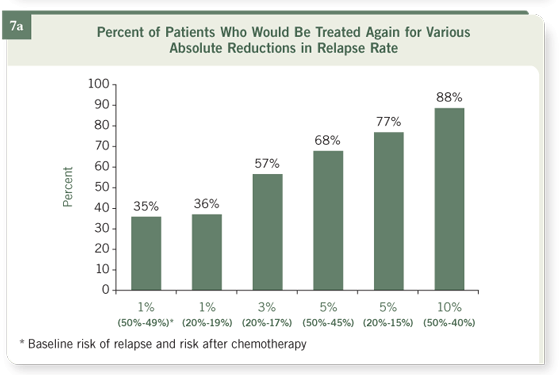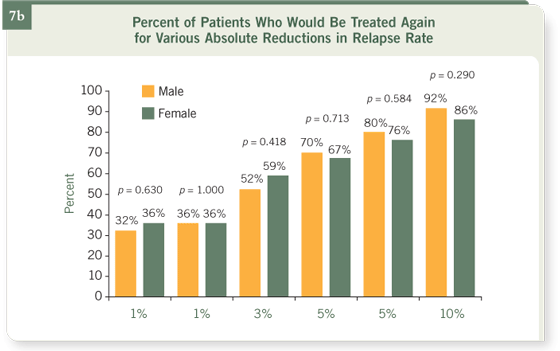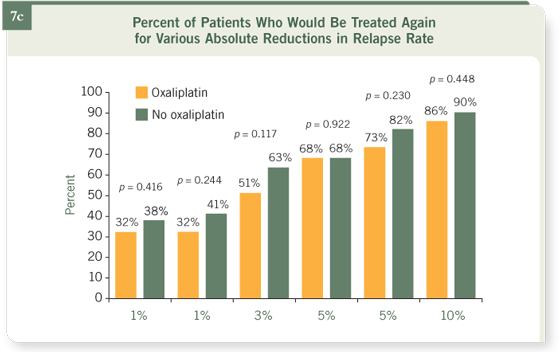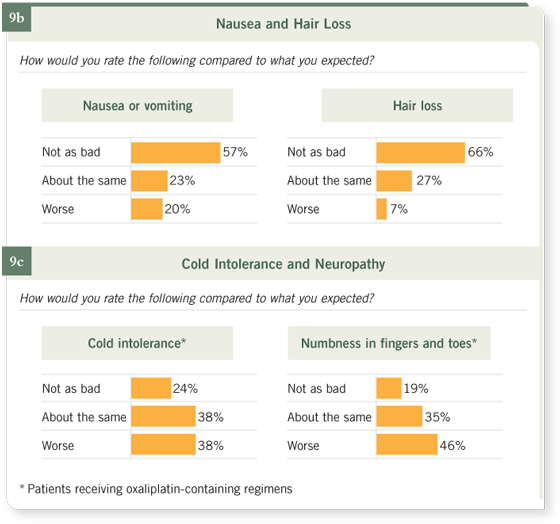RESULTS
More than one third of the patients would be treated again with the chemotherapy regimen they previously received for a one percent reduction in the risk of relapse, although more than 10 percent would not receive treatment again even for a 10 percent reduction in the risk of relapse (Figure 7a).


The responses of men and women were not statistically different, and no gender-related trends were found in treatment tradeoff perspectives (Figure 7b). Nor were significant differences apparent in the responses of patients receiving oxaliplatin-containing regimens compared to other regimens, mainly fluoropyrimidine monotherapy, despite the potential increase in side effects and toxicity associated with the addition of oxaliplatin (Figure 7c).
When these findings were compared to the related Patterns of Care survey, data demonstrated that the predictions of practicing oncologists were lower than the responses of the patients surveyed. A parallel survey of GI oncology investigators showed similar predictions (Figure 8).




The patient participants were also queried about their experiences with the side effects and toxicities of treatment, and their experiences with adjuvant chemotherapy were somewhat different than anticipated (Figure 9a). Specifically, more than half of the patients expected more GI toxicity and alopecia than they experienced (Figure 9b).
In contrast, more than one third of patients receiving oxaliplatin-containing regimens experienced more troubling cold intolerance and peripheral neuropathy than they expected (Figure 9c).
Most patients were satisfied with the overall quality of care received from their medical oncologists, but fewer were satisfied with the amount of information provided on side effects and treatment benefits (Figure 10).


Most patients were not offered participation in a clinical research study, and of those patients who were not, more than 80 percent would have liked to learn about research-based opportunities. However, of the patients who were offered clinical trial participation, approximately two thirds declined entry (Figure 11).

| Table of Contents | Top of Page |

